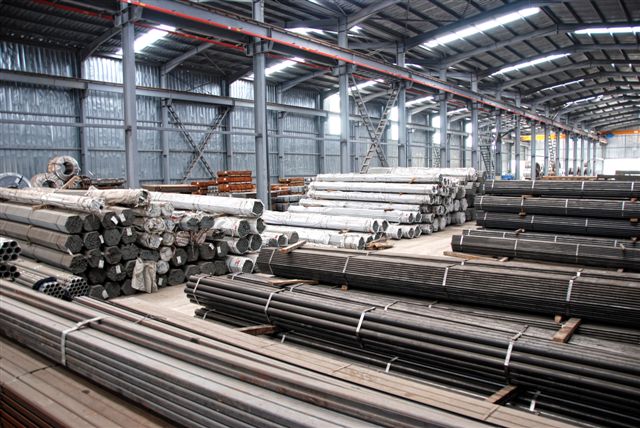A Growing Crisis…The Australian Steel Industry Can’t Compete With China
May 27, 2012
Panic may be setting in among the “movers and shakers” of the Australian steel industry … for good reason.
Construction companies and others who purchase steel in Australia for big building projects have been awarding major contracts to Chinese companies and not to local suppliers. Industry spo
kespersons have brought attention to the growing problem, but no changes have occurred … yet.
The reasons why companies have been making large purchases from Chinese steel producers are obvious. Australian labor costs and taxes are much, much higher than similar costs in
China … the Yuan (Chinese currency), are currently undervalued … and, worst of all, the Chinese government provides generous subsidies to its many state-owned firms.
Add it all up … Chinese companies have a huge advantage over their Australian counterparts.
News of the growing crisis broke when it was reported recently that Gindalbie Metals, an Australian-based company, had imported the bulk of the steel it needs for its Karara iron ore project in Western Australia from a Chinese supplier.
The Australian company claimed its purchase decision was based on economics – bids from local suppliers were three times higher than the bid received from the Chinese company.
However, Gindalbie Metals was accused of favoring the Chinese company – Ansteel – which is owned and operated by the Chinese government because the company is a major shareholder of Gindalbie Metals’ stock. In other words, call them a partner.
The national debate is heating up because overseas purchases of steel can – and do – have a major impact on the Australian national economy.
Supporters of local steel manufacturers claim they are being “shut out” of the bidding process and often excluded entirely. Contractors and builders – the companies that buy steel – claim that the bulk of their purchases are still coming from local companies. However, they also reluctantly admit that, for some materials, prices offered by Chinese companies are just cheaper.
Ian Cairns, Industry Development Manager for the Australian Steel Institute stated in a recent speech that he understands why some Australian companies are buying steel from Chinese companies. Price is always a critically-important factor in large construction projects.
Nevertheless, he has called on the Australian government to pressure companies to “buy local.” According to Cairns, local steel producers are currently running at only 50% capacity.
Mr. Cairns also stated that the Australian steel industry has much higher production rates than its Chinese counterpart due, in large measure, to advanced technology. It’s an “advantage” that Australian contractors should carefully consider when making steel purchase decisions.
As might be expected, the union that represents Australia’s steel workers has also gotten involved and is calling for a government investigation into claims that local manufacturers are being “locked out” of the bidding process.
This is clearly an explosive issue … one that can dramatically impact the national economy … and the lives of the people who work in the industry.
The crisis is, at this point, still manageable. It remains to be seen if local companies begin to “buy local” more frequently than in the recent past.
e-fab.com.au
Titudin venenatis ipsum ac feugiat. Vestibulum ullamcorper quam.
OTHER ARTICLE & NEWS
-
Chinese Steel Crisis Causes Iron Ore Price To Plummet
May 29, 2014 -
BHP Billiton Prepares To Sell Stake In Guinea Major Iron Ore Deposit
May 17, 2014 -
China Iron and Steel Industry is Facing Tough Times
February 22, 2014 -
$6 Billion Iron Ore Project Fails in Western Australia
June 29, 2013 -
Record Iron Ore Shipment Leaves Australia for China
June 17, 2013 -
Steel Industry Expects to Soar in 2013
March 17, 2013 -
Bluebeam Revu
March 4, 2013 -
Heavy Rains Flood Australian Coal Mines
February 9, 2013 -
NMDC Cuts Prices for Iron Ore…Steelmakers Benefit
January 12, 2013 -
Australian Mining Company Plans Major Plant Construction Project in Africa
December 6, 2012 -
Tekla BIMsight
November 6, 2012